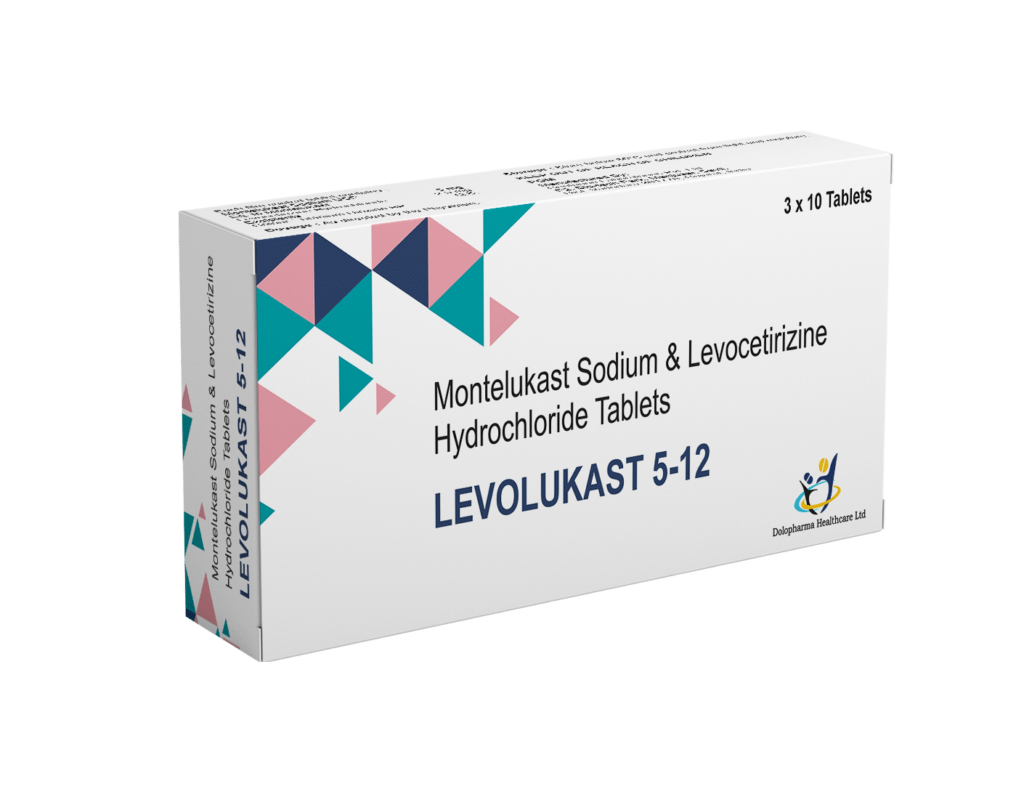







What This Montelukast + Levocetirizine Tablet Helps With
How It Works
Good for:
Important precautions while taking Montelukast + Levocetirizine Tablet
Montelukast
Eosinophilic Conditions: In rare cases, patients on therapy with montelukast may present with systemic eosinophilia, sometimes presenting with clinical features of vasculitis consistent with Churg-Strauss syndrome, a condition that is often treated with systemic corticosteroid therapy. These events usually, but not always, have been associated with the reduction of oral corticosteroid therapy.
Levocetirizine
Patients should avoid engaging in hazardous occupations requiring complete mental alertness, such as driving or operating machinery, when taking levocetirizine. Precaution is recommended with intake of alcohol and in those who are on CNS depressants.
Renal Impairment
As levocetirizine is mainly excreted through urine, dosage adjustment may be required in patients with impaired renal function. Hence, this combination should be used with caution in such patients.
Hepatic Impairment
As montelukast is mainly excreted through bile, caution is to be exercised while prescribing this combination in patients with impaired hepatic function.
Children (5-12 years): One Montelukast + Levocetirizine Tablet 5-12 tablet once daily.
Method of administration
For oral administration only.
Side effects of Montelukast + Levocetirizine Tablet
Montelukast
Common side effects include dyspepsia, abdominal pain, rash, dizziness, headache, fatigue, fever, trauma, cough, and nasal congestion.
Levocetirizine
Use of levocetirizine has been associated with somnolence, fatigue, nasopharyngitis, dry mouth, and pharyngitis in subjects 12 years of age and older. Further uncommon incidences of adverse reactions like asthenia or abdominal pain were observed.
Store below 30°C and protect from light and moisture.
Keep out of reach of children.
10 x 10 Alu/Alu blister pack
Montelukast + Levocetirizine Tablets are available in an Alu/Alu blister of 10 tablets. Such 10 blisters in a unit carton with a package insert.
Contact us directly to receive full information on the product, the formulation, the science behind it, stability data, and more. Our Business Development Manager is a click away.
Questions are useful tools, they open lines of communication; give us information; improve interactions, facilitate analysis, and many more.
A pharma CMO is a special kind of an organization, offering contract manufacturing services to pharmaceutical companies for various kinds of drug formulations.
Reduce overall costs and time to market :
Contract manufacturers already have the needed infrastructure and technical staff, so working with a CMO or CDMO can decrease the cost of manufacturing your pharmaceutical products.
Scalability and flexible production capacity :
You can produce what you need when you need it without worrying about excess capacity. Additionally, CMOs understand the importance of quality and compliance, so you don't have to sacrifice safety for scalability.
Save on upgrading and maintaining equipment :
If you have your manufacturing facility, you’ll have to pay to upgrade your equipment as technology advances—which can get expensive. A CMO/CDMO’s only function is to make and distribute products, so part of their core business responsibility is to update their equipment whenever needed and perform maintenance.
Ease supply chain issues :
During the pandemic, there were several instances of supply chain issues, including medicine shortages. CMOs are generally better equipped than startups to handle a supply chain crisis.
Bandwidth to focus on core competencies
When your company resources aren’t directly allocated to manufacturing and distribution, you have more time to focus on other tasks, like marketing your new drug, researching, or working on drug discovery.
We have 7+ manufacturing sites with a minimum of WHO GMP certification and other country-specific approvals like NAFDAC approved, PPK Kenya Approved, TFDA Tanzania Approved, EU-GMP Approved.
We have below manufacturing capacity:
For Tablet, Capsule, and soft gel: up to 1 million units per shift
For Syrup: up to 0.05 Million per shift
For Ampoule and Vial: up to 0.1 million units per shift
For Ointment and Cream: up to 0.1 million units per shift
For Suppository: 0.1 Million units per shift
